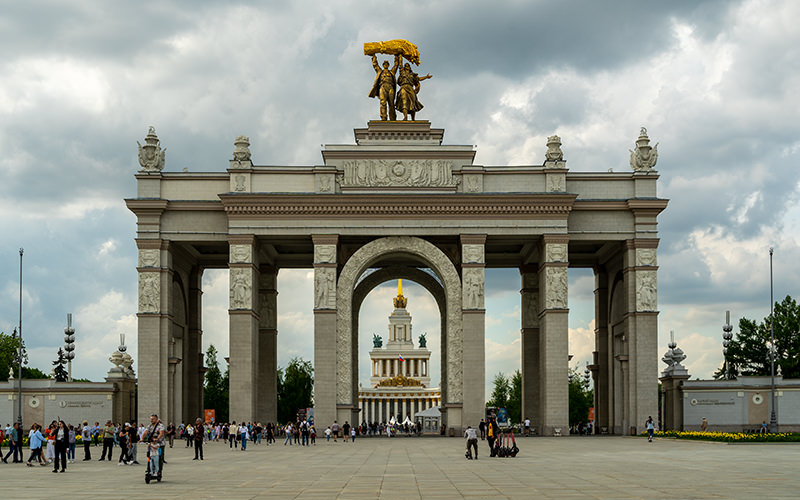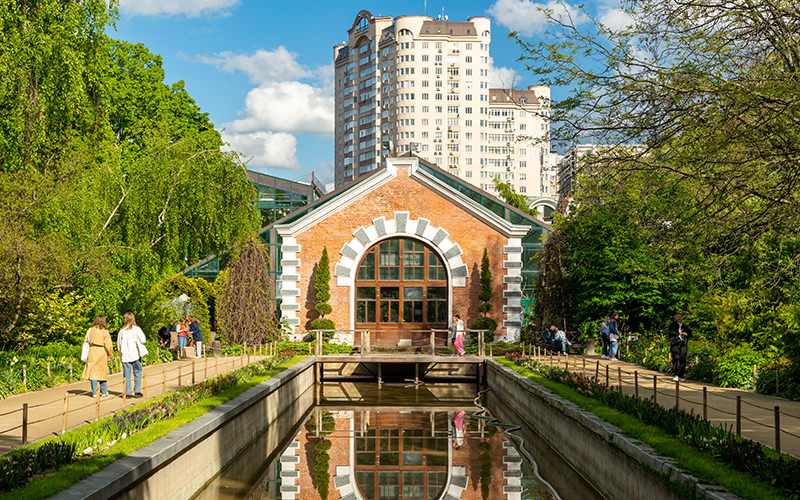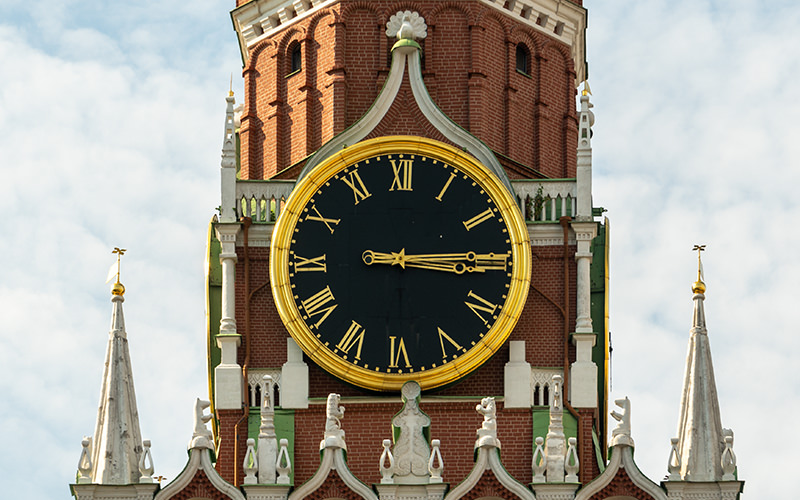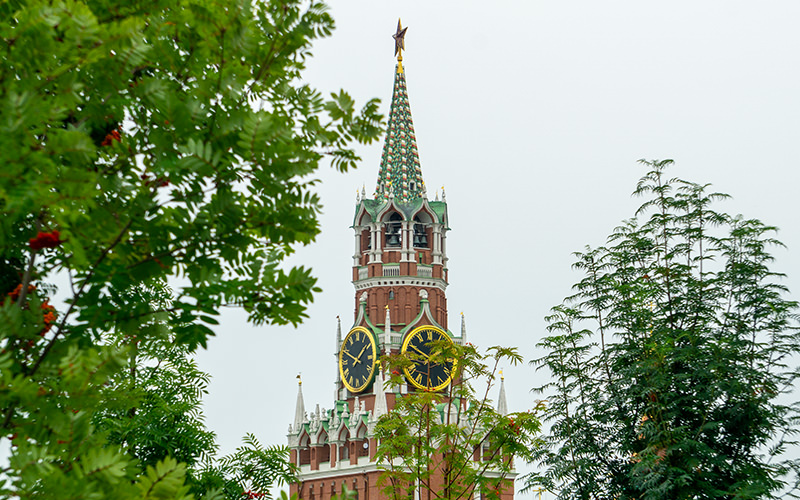On the day of Moscow's 870th anniversary, an innovative recreational area - Zaryadye Landscape Park - opened in the very heart of the city, next to the Kremlin. It is the first park built in the capital in the last 70 years and the first in 200 years built in the city center. Its area is 78,000 square meters. The project was developed by an international team of architects, and it was implemented in record time - 2.5 years.
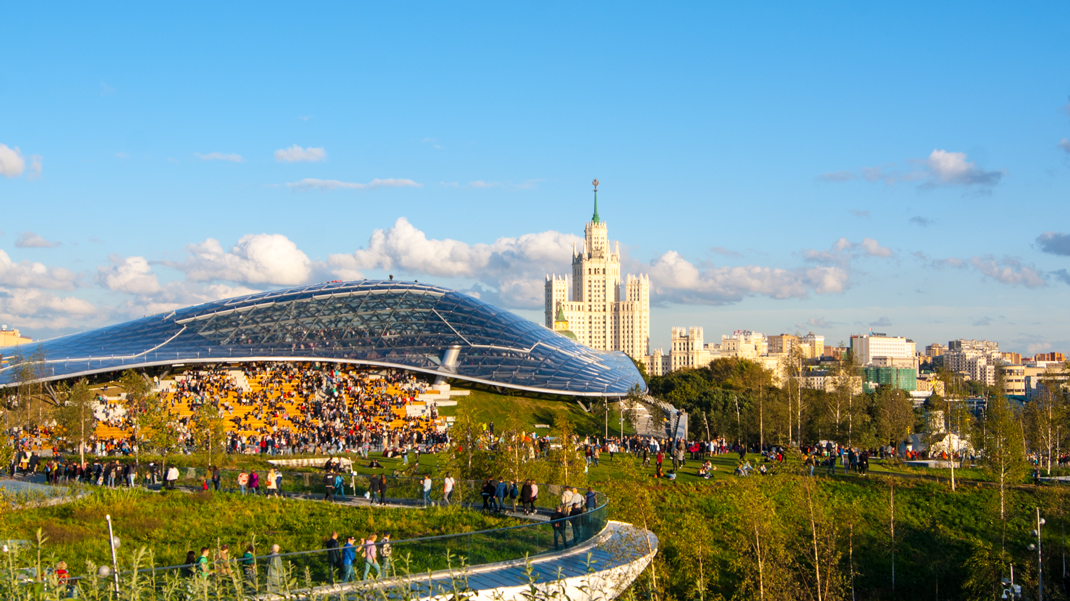
It is worth noting that the location of the park is quite remarkable: previously, the Rossiya Hotel, the largest in the world at the time of construction, was located here. During the construction of Zaryadye, many historical artifacts were found, and significant improvements were made to Varvarka Street and the churches located on it.
How to Get There
Zaryadye is located in the very center of Moscow, not far from the Kremlin. The nearest metro stations are "Kitay-Gorod," "Ploshchad Revolyutsii," "Okhotny Ryad," and "Aleksandrovsky Sad."
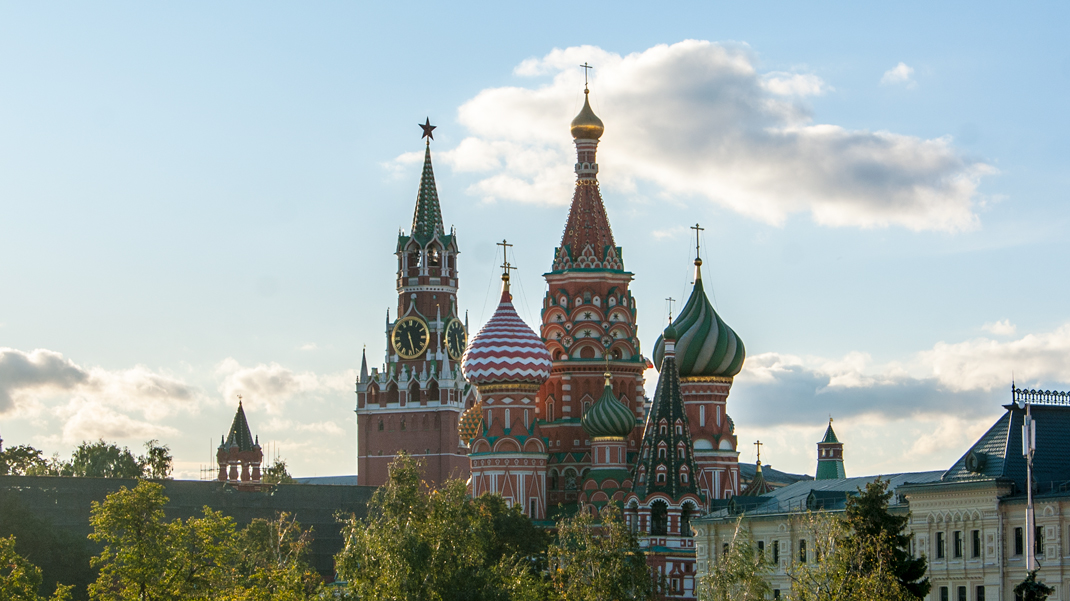
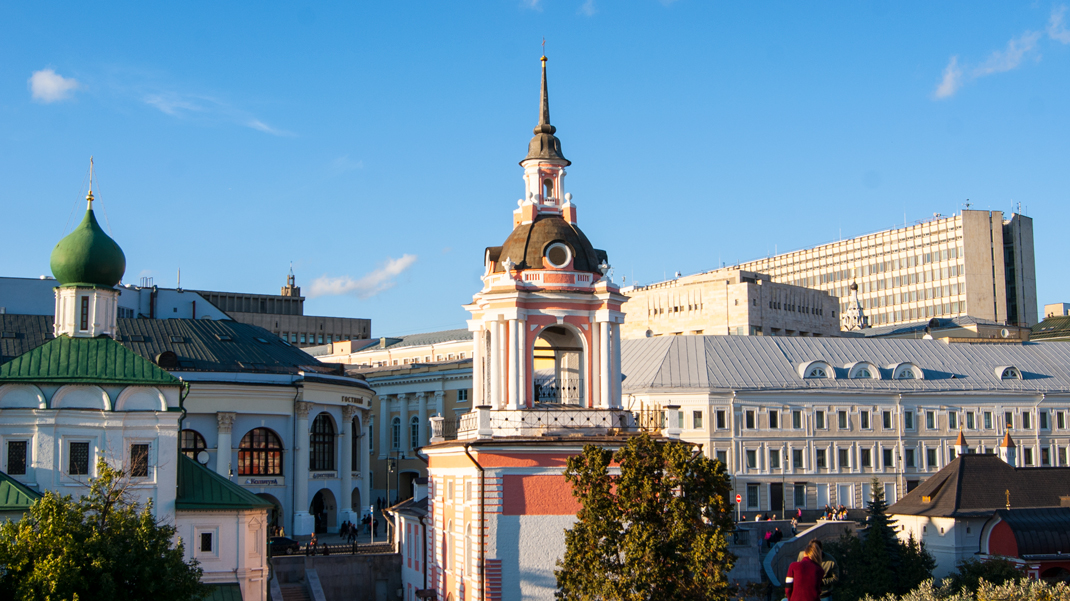
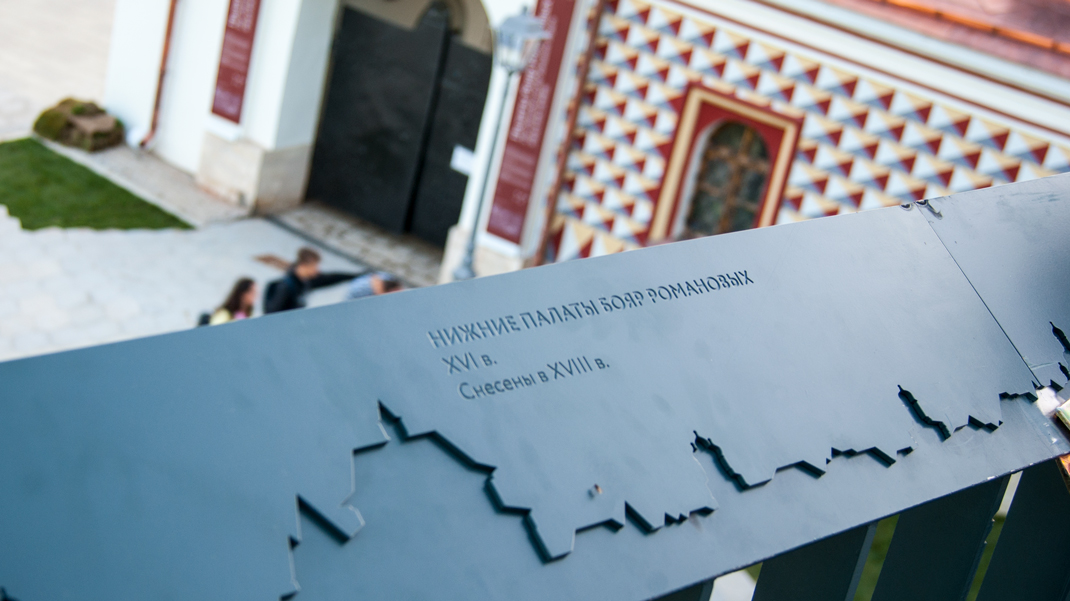
Now, more about the park itself. It embodies all the global trends in landscape design and urban design. Its feature is that all elements of infrastructure, enlightenment, and entertainment are located under artificially created landscapes. The green part of the park includes four climatic zones found in Russia: forest, northern landscape, steppe, and floodplain meadows.
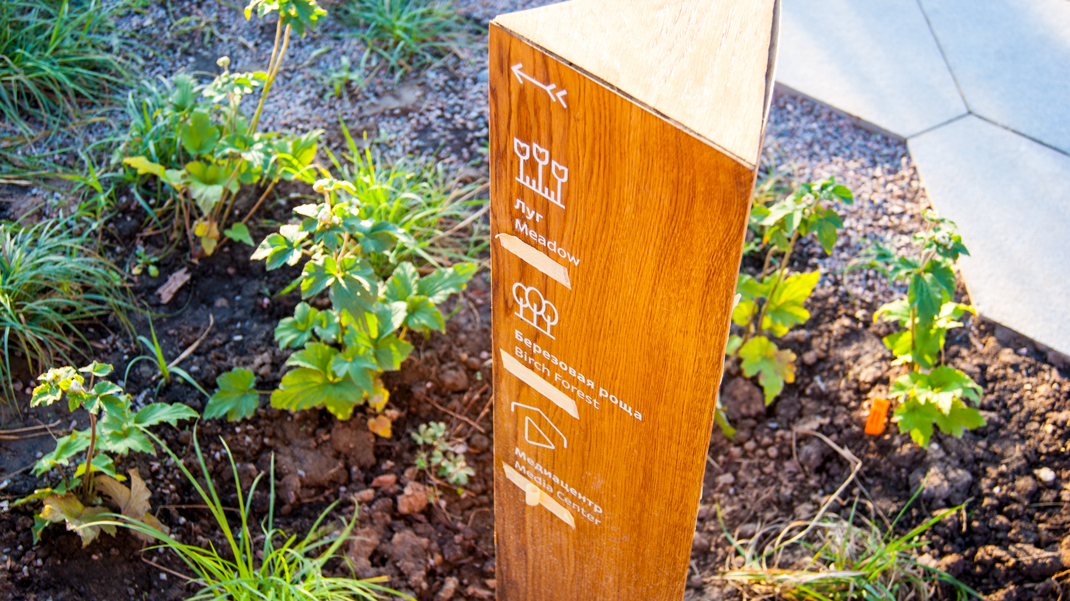
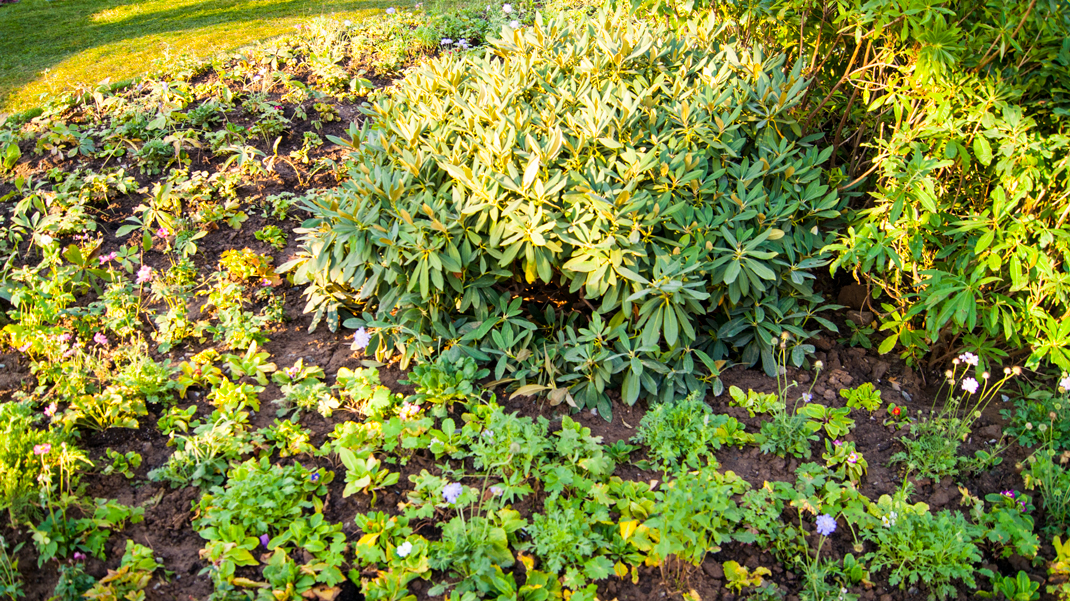
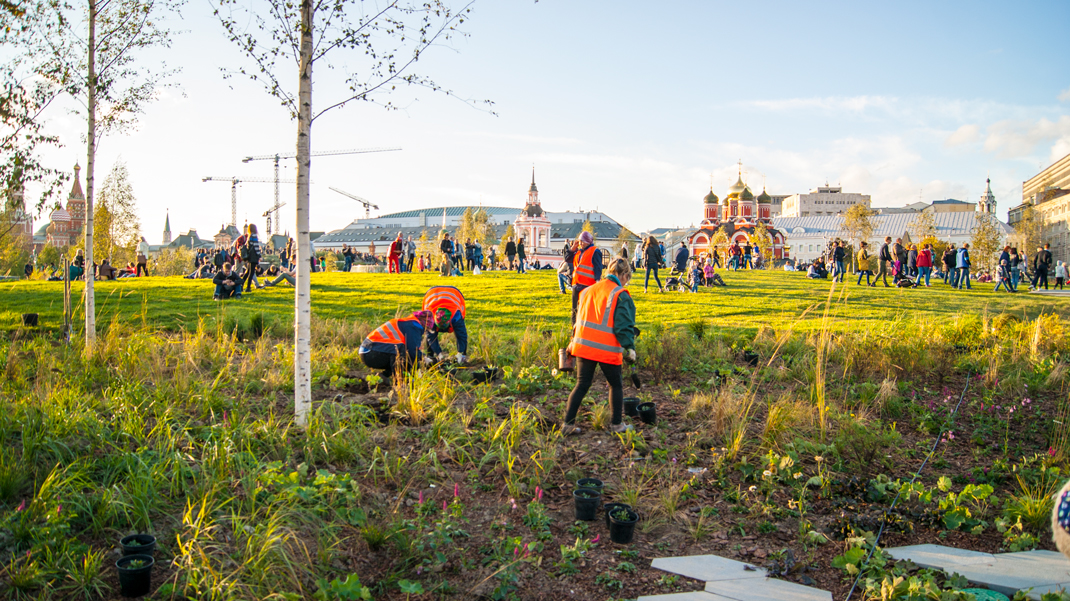
The media hype prompted us to visit Zaryadye as soon as possible. We did it a week after the opening. The impressions are quite contradictory. Everything in order. It was the second half of Saturday. There were a lot of people; it felt like all the residents and guests of the capital decided to come on the same day. By the way, you can visit the park daily from 10 am to 10 pm (last entry at 9:00 pm), except for Monday - on this day, access is from 2:00 pm.
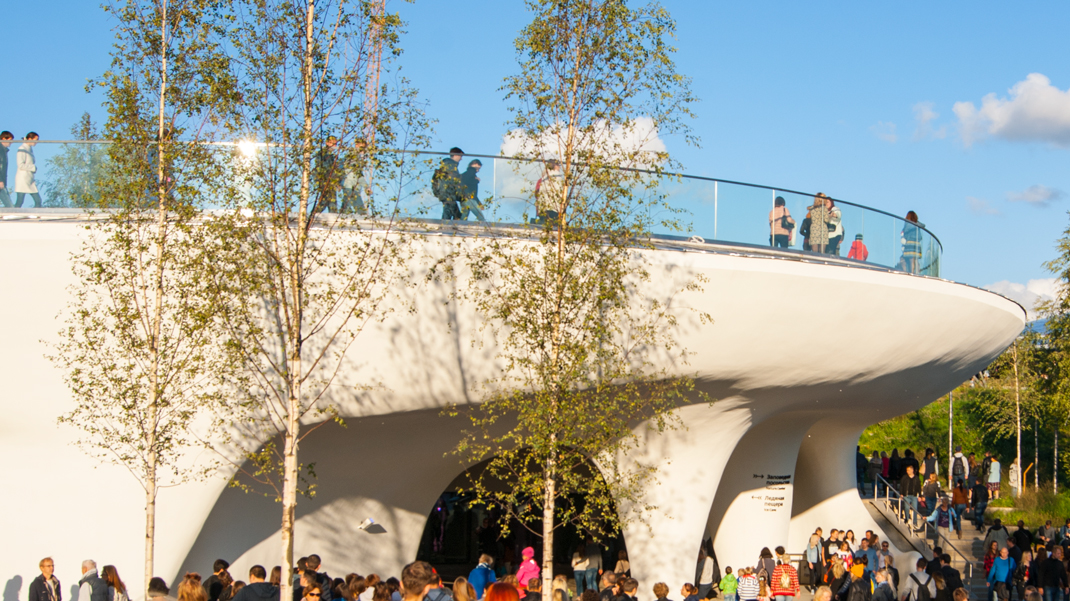
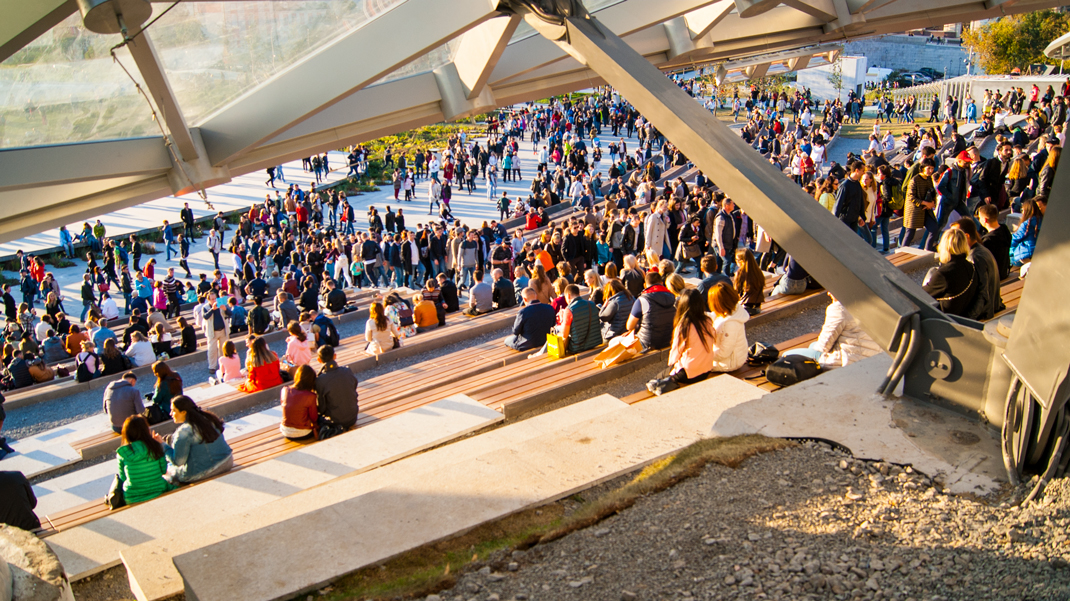
The scale of the park is truly impressive, not least because of the glass shell. Building such complex structures in such tight deadlines seems unreal. Moving around Zaryadye, we periodically come across echoes of accelerated deadlines in the form of unfinished work. It is noticeable that the plants look wilted. In some places, they continue to lay down the lawn and finish the paths. The media are buzzing with the theme of vandals, although when visiting the park, it seems that they have nothing to do with it; it's just tight deadlines and a large number of people doing their job. Note that this is purely a personal point of view.
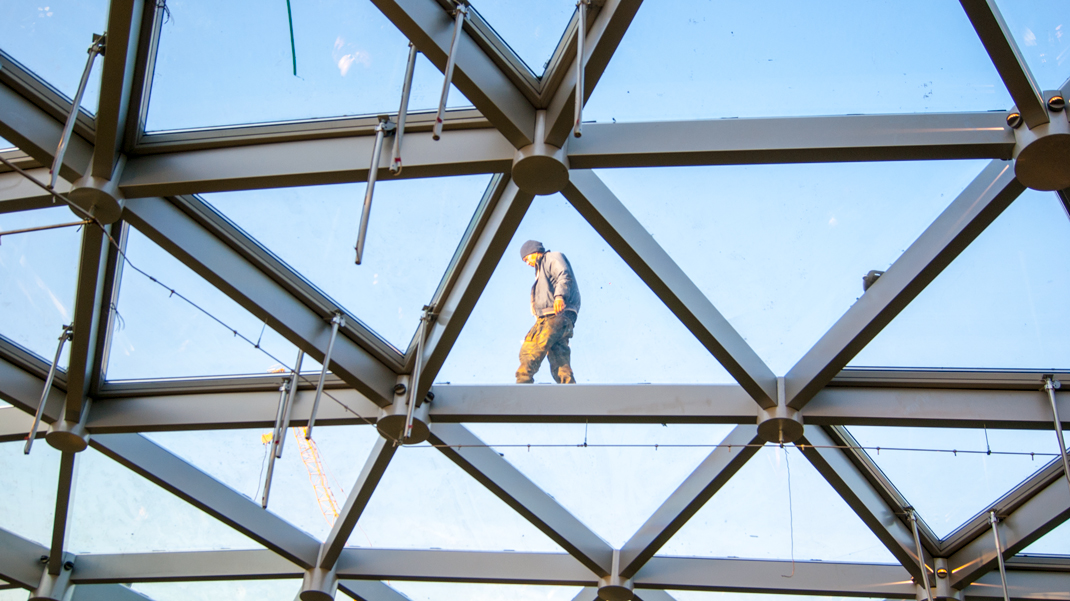
We continue our walk and encounter difficulty in orientation again. The park is practically devoid of navigation, and what is there is not informative and difficult to find. Interactive terminals in the media center helped somehow figure out where everything is located. The creators of Zaryadye promise that soon there will be modern attractions with an immersion effect and augmented reality (wind, smells, etc.) in the media center pavilions, and you will be able to fly over Siberia and the Far East.
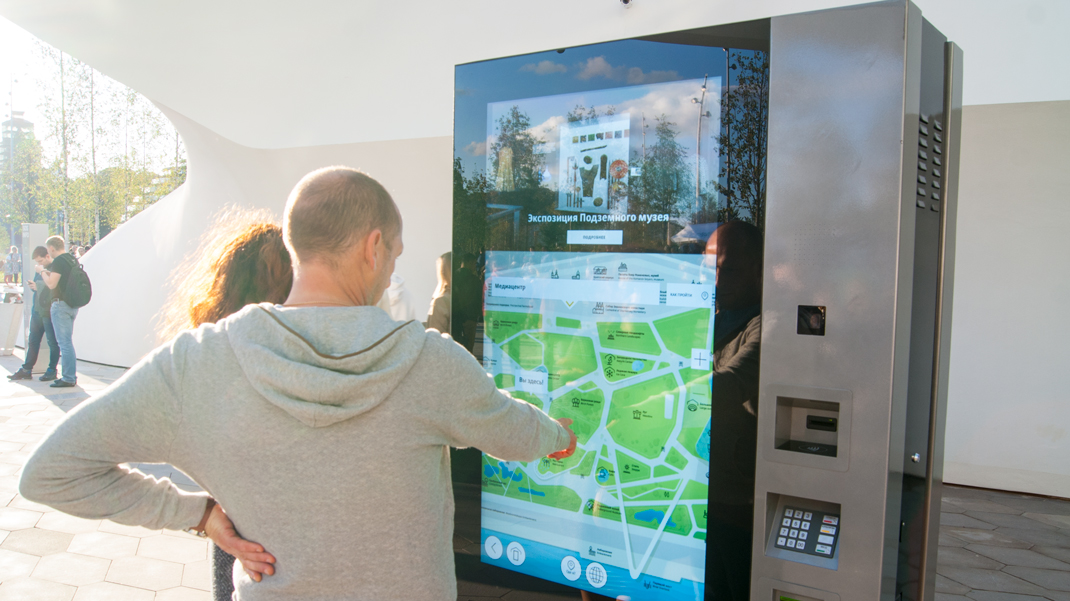
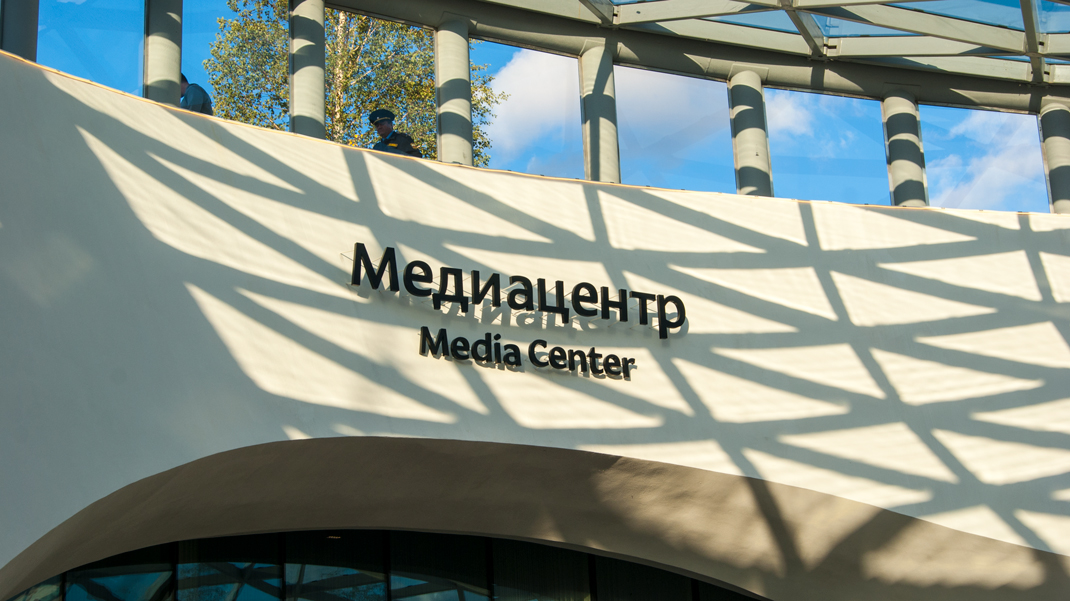
In addition to contemplating the natural diversity of Russia and interactive entertainment, the park also provides a scientific program. Modern interactive scientific laboratories and lecture halls are located in the building of the reserve embassy. Along with them, an ice cave was located in the building, which promises to open in October 2017.
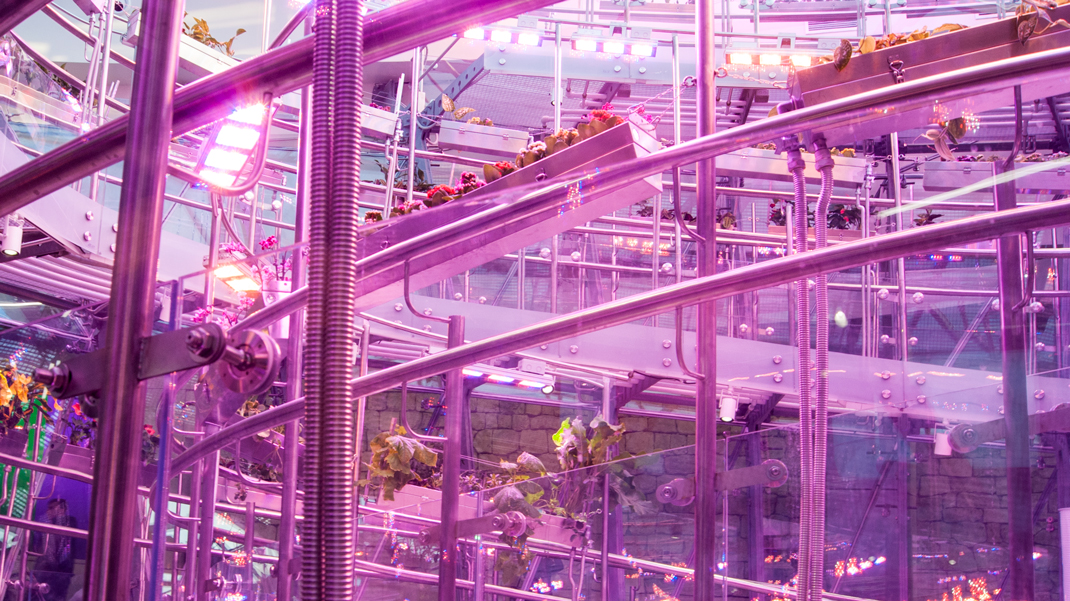
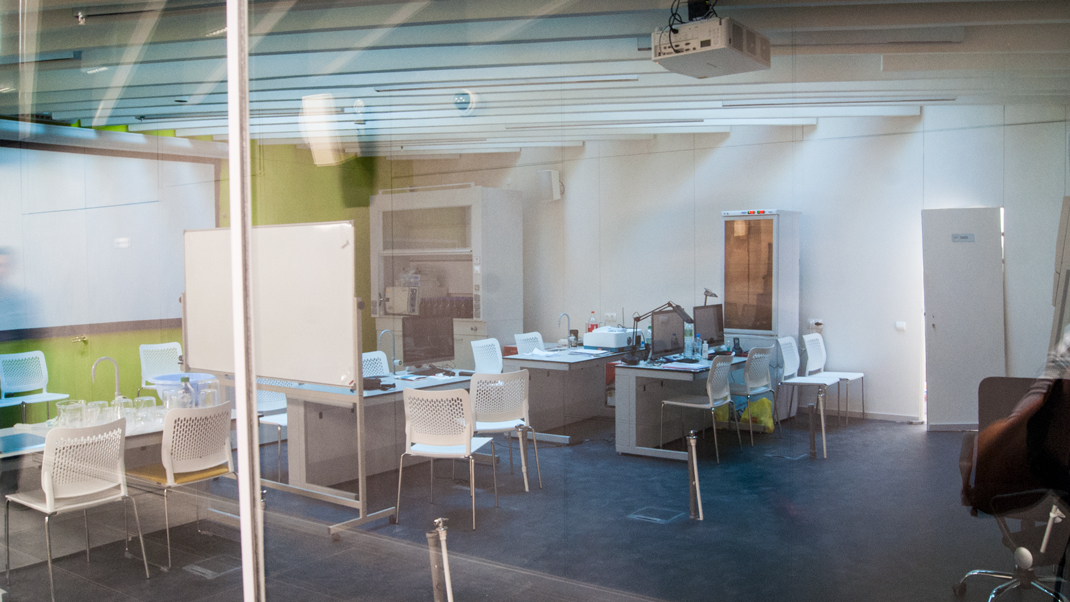
We continue our walk and once again encounter difficulty. The park has a modern concept - the space can be used for outdoor picnics. Only it is not clear where the recreational area ends and the place for the growth of rare plants begins.
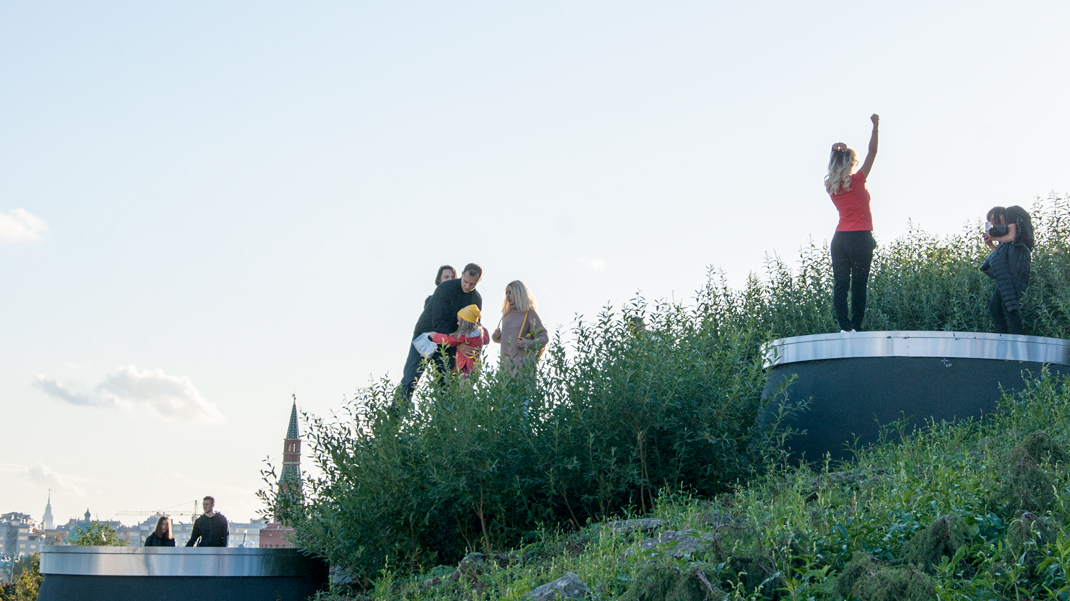
We approach the hill covered with a glass dome. It looks unusual and futuristic. We go down already by stairs, which pass through the middle of a large amphitheater, turn left, and find ourselves at the entrance to the Philharmonic. It turns out that the hill covers its building.
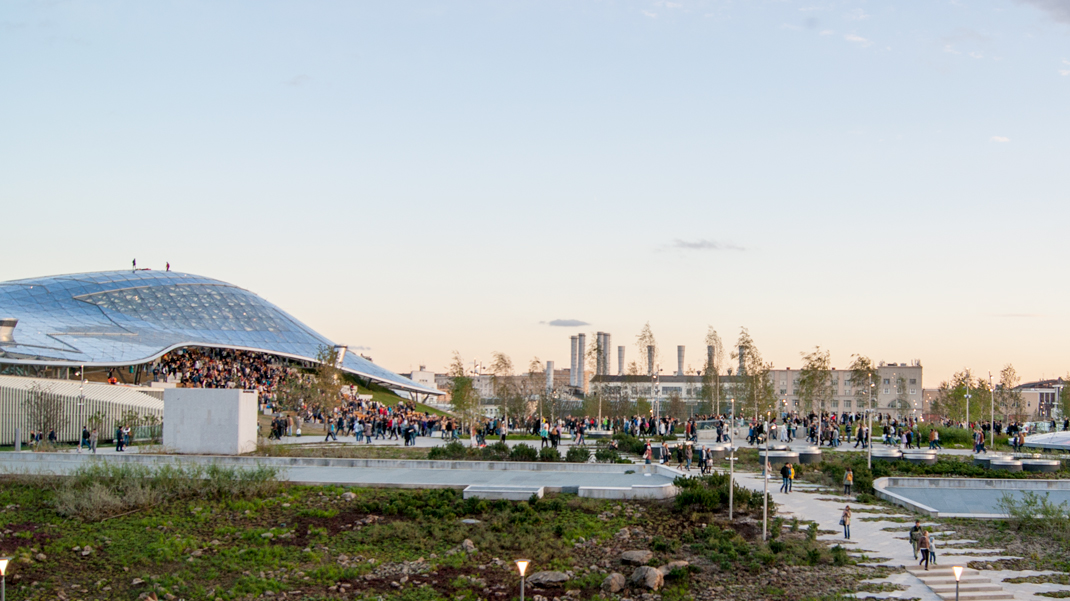
We approach the final point of our route - the hovering bridge. It stretches over the renovated Moskvoretskaya embankment and hangs over the river. It looks very unusual, as there are only supports at the base, and the glass railings add to the feeling of weightlessness. On the way to the exit, we pass by small artificial ponds, walk around the park again, and come out onto Varvarka.
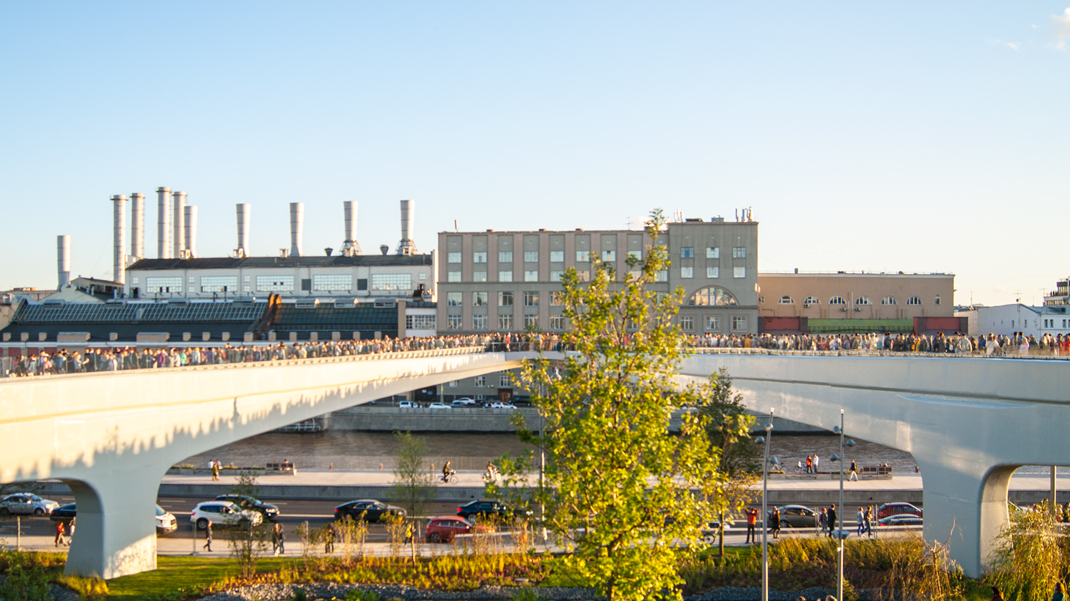
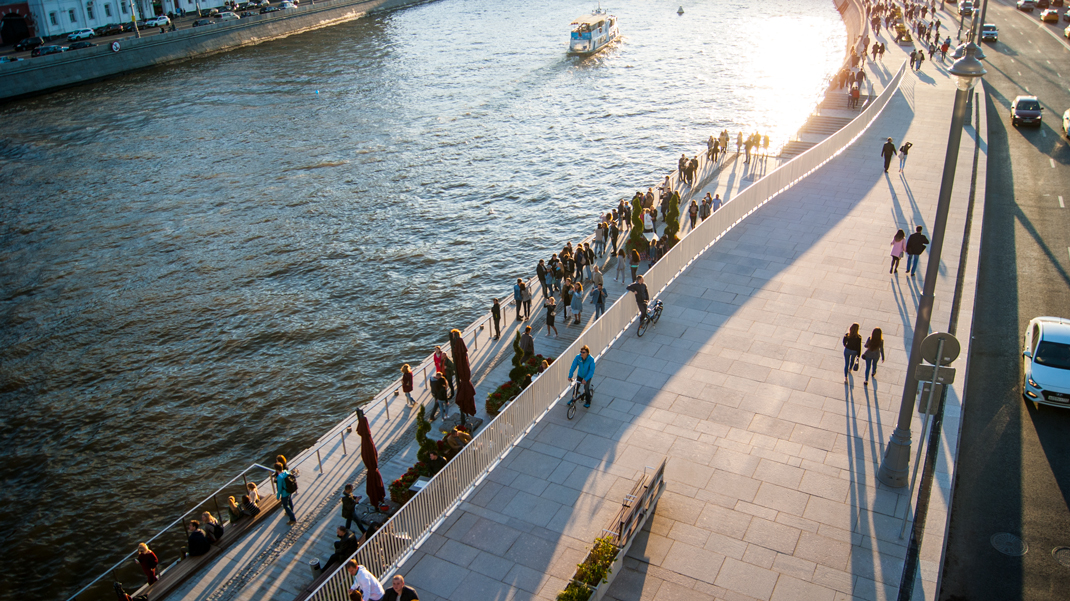
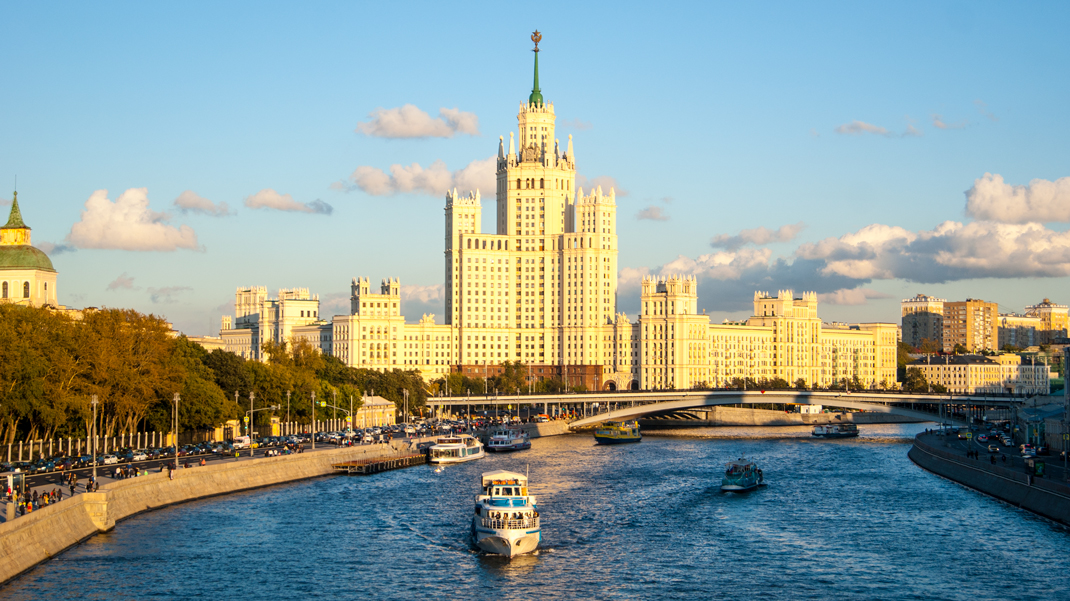
For ourselves, we decided that we need to visit the park again in a few months when all the work is completed, and we hope there will be significantly fewer people.
In summary:
- The park offers magnificent views of the Kremlin and the embankment;
- It is perfect for a family walk;
- The park will be of interest to nature lovers, especially those who study it professionally.


